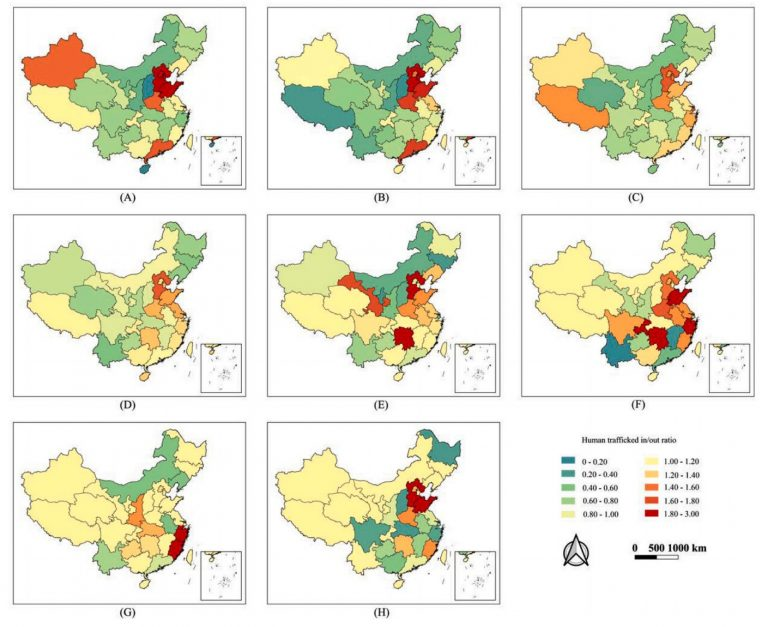Abstract
In China, the illegal adoption of missing persons and especially of missing children is a major public safety issue that affects social and family stability. Recent work has established a trafficking information network developed from a volunteer-managed database of missing persons that identifies and locates node cities and critical paths of
illegal adoption. In order to evaluate locations where trafficking can be identified and provide direct advice for affected families, this study analyses the temporal and spatial distribution of the missing population and explores factors that affect their transfer. We use spatiotemporal information to construct multiple random forest (RF) models for predicting the locations of missing persons transfer on a larger spatial scale. The proposed independent RF models, namely, provinces potentially entered, destination grids, relative distances and relative directions models, achieve high levels of accuracy. Moreover, an integrated RF-based city-level prediction model can effectively locate the city a missing person was trafficked to. From our driving factor analysis, the transfer paths are strongly correlated with source provinces and grids. The study also shows that the transfer of missing persons is driven by multiple factors rather than by a single element.

Q.E.D.









